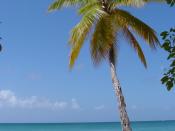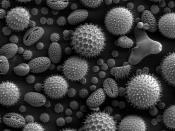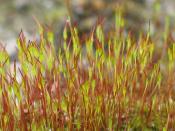Angiosperms are very plants and have evolved a lot since it ancestor. Some of the reproductive structures found in the plants are petals, stigma, sepal, and fruit. Petals are brightly colored leaf-like structures that surround the main reproductive organs of the flower. Petals are used to attract pollinators and rub off pollen and help disperse them to other flowers. Attracting pollinators greatly increases the probability of pollination in angiosperms. Stigma is made of a long tube that has a sticky surface to trap pollen, usually from other plants. The sticky surface and pollen recognition allows the flower to effectively trap pollen from other plants to increase pollination probability and variation in the offspring. The stigma is usually shaped to easily fit the pollinator. Sepals are small leave at the end of the flower. The sepal protects developing flower from environmental dangers and/or herbivores. This ensures the flowerÃÂs development and reduces the waste of nutrients and energy on dead flowers.
Protecting the flower also increases the probability of reproduction. Angiosperms have also evolved to make fruits when the flower is fertilized. Fruits are usually made up of the ovary in flower. They promote seed dispersal and protect the seeds when itÃÂs dormant. The animals eat the fruit and many times disperse the seeds far away from the plants to avoid completion. These adaptations help the plants increase the probability of reproduction and variation in offspring.
Mosses are limited to the moist ground unlike the angiosperms. Mosses do not contain vascular tissue that allows plants to grow tall and transport the water, minerals and food up and down the plant. This prevents moss to spread to area with less moisture by not being able to suck it out of the soil. Mosses also do not have seed which allow the offspring to...


